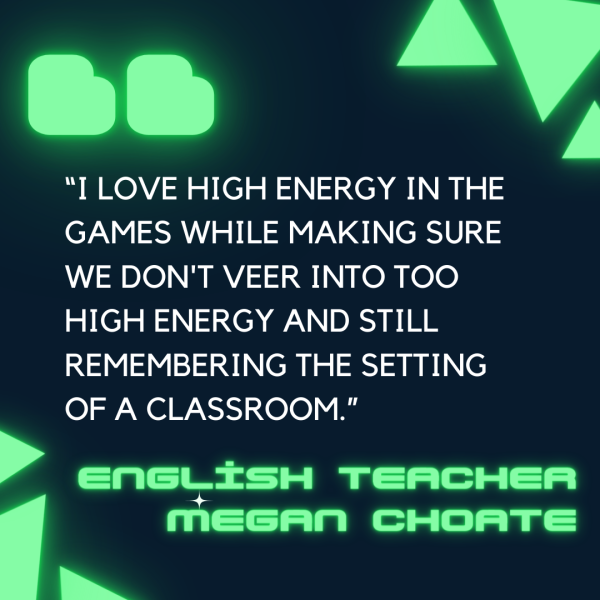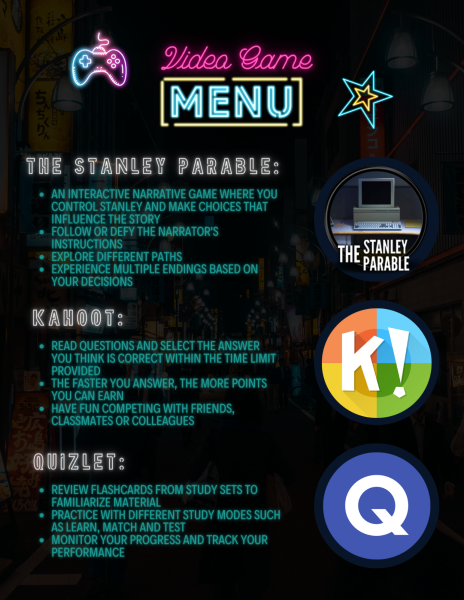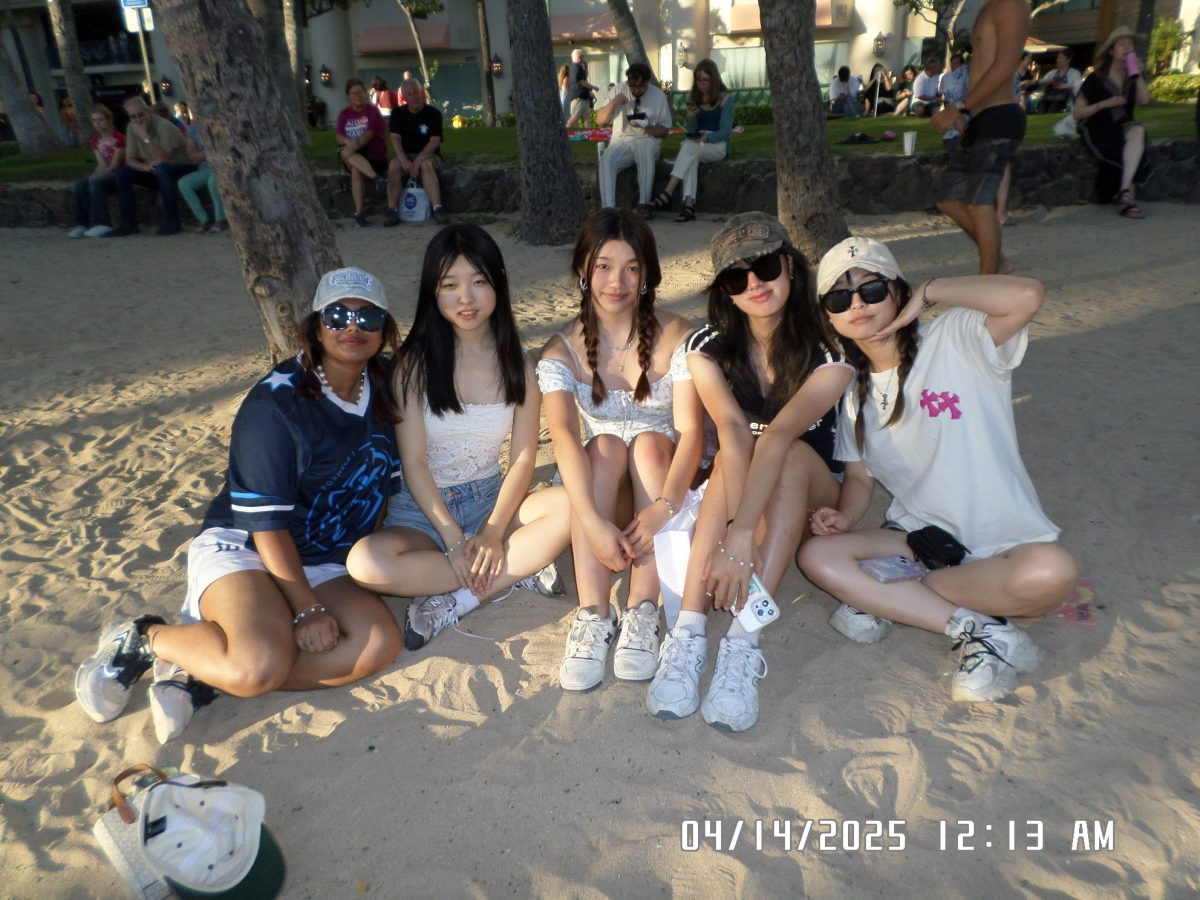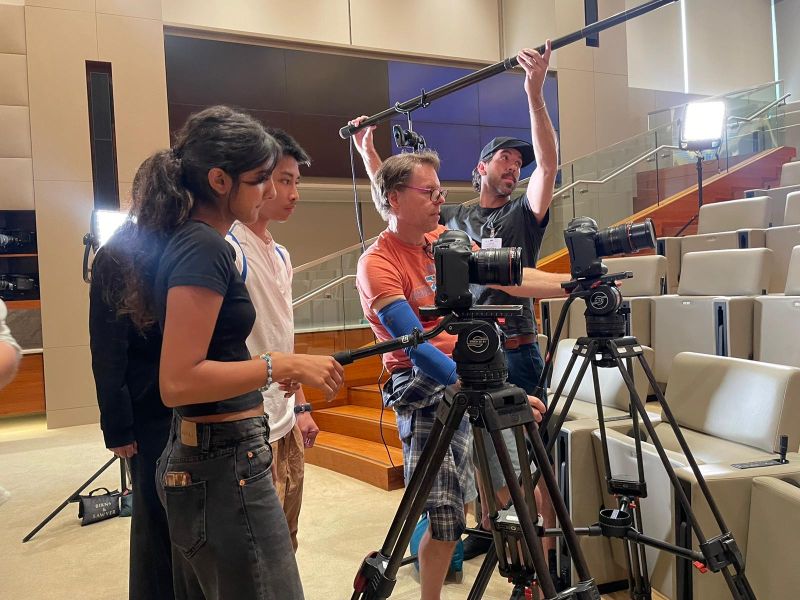Spanish teacher Molly Guadiamos has spent more than a decade using Quizlet, a review website that has transformed her lengthy lists of Spanish vocabulary into bite-sized packets. It has now become a core part of her Spanish curriculum.
“I found Quizlet especially helpful for students who weren’t good at just using a list for themselves,” Guadiamos said. “I found it just improved everybody’s overall knowledge of it, so I’ve used it steadily since.”
Classroom games have been integral to the MVHS curriculum for many years, serving as a useful tool for memorizing concepts and information. A few of the most popular games include Kahoot, Gimkit and Quizlet. Many MVHS language teachers, including Chinese teacher I-Chu Chang, have found these games a beneficial tool for review.
“With Kahoot, I use it as a summary or review activity, because you can put in more text, or choose a correct answer, or they can do more reading questions,” Chang said. “Interpreting what word might fit better, rather than just identifying terms, can show a little more understanding once something’s already learned.”
Similarly, Senior Riddhika Sharma claims that Kahoots not only help with the review of various concepts and vocabulary but also brings a sense of enjoyment into the classroom through competition, enhancing her learning experience.
“In Government right now we do a lot of Kahoots for memorization, and I think it’s really fun because when you play a game, you’re competing against others, which also kind of compels you to learn at the same time,” Sharma said. “It makes the environment fun for learning.”
As the digital age continues to enhance education, teachers have increasingly strived to utilize classroom games as a method for community engagement between students. Chang has found that these games, especially with the team-based modes, have created a collaborative environment, where students use the competitive incentive to uplift each other.
“With team mode, the team can help people that don’t know, and ask each other ‘How can I read something?’, so that the team can have a higher score,” Chang said. “Students get to teach each other and learn from each other, too.”

Contrasting the review games employed in the MVHS language department, literature teacher Megan Choate instead uses video games as a form of academic relief from the lectures and reading that often consume her students’ day.
“It brings a good variety to class. Sometimes it’s nice if we’re doing focused heavy academic stuff to have that break of a game,” Choate said. “In World Studies, we see the students every single day and so if we’ve done a heavy long week, I’ve done, sometimes on a Friday afternoon, team bonding in their group.”
These games are able to create an environment in class that allows students to take a more active role in their learning. For literature teacher Randy Holaday, the games provide a more hands-on approach to the content being taught. Here, he has used games that he plays in his spare times, including “Legends of Zelda: Breath of the Wild,” in his classroom.
“I taught American Literature three or four years ago and we did ‘Into the Wild,’ which is all about going out in nature and experiencing the world,” Holaday said. “It was like, ‘What’s it like experiencing digital nature?’ I would have students two years later being like, ‘Oh my god, remember when we played Zelda in class?’ even though it was one day. It just offers really high engagement in a way that I haven’t really seen.”
Holaday, amongst fellow literature teachers like Choate, has spearheaded a movement to include video games in the classroom, providing his personal video game consoles for students to use. He believes that the games must be chosen with students in mind, where he specifically cites “The Stanley Parable,” a game he has chosen to add to the AP Literature curriculum in order to bring some fun to students’ learning.
“The biggest barrier to entry with video games is learning how to play,” Holaday said. “Can every student, even students who aren’t familiar with video games, be able to pick up a controller and get what you want out of it? The Stanley Parable is literally just a joystick and moving around and yet it still has really high engagement. So, it has a very low barrier to entry, so that any student can play it.”

Choate echoes Holaday’s sentiments, expressing how choosing the right video games for the learning environment is critical in the success of its implementation. Here, she replicates the care that Holaday puts into choosing the game, explaining that they are often a balancing act between its effectiveness in learning and the fun outlet it can provide.
“The challenge can sometimes be just making sure all students are on board with the game and balancing the line,” Choate said. “I love high energy in the games while making sure we don’t veer into too high energy and still remembering the setting of a classroom.”
Ultimately, Holaday believes that these video games, specifically as they continue to rise in popularity amongst youth, are the future of curriculum. As the demographics of students and their interests continue to shift, he believes the curriculum must evolve to meet the needs of the students of today.
“Video games are an entire genre that our curriculum is just ignoring,” Holaday said. “So, on top of the engagement factor of it, it seems very responsive to students in a way that we’re constantly trying to get our books to be responsive to students in their lives.”












